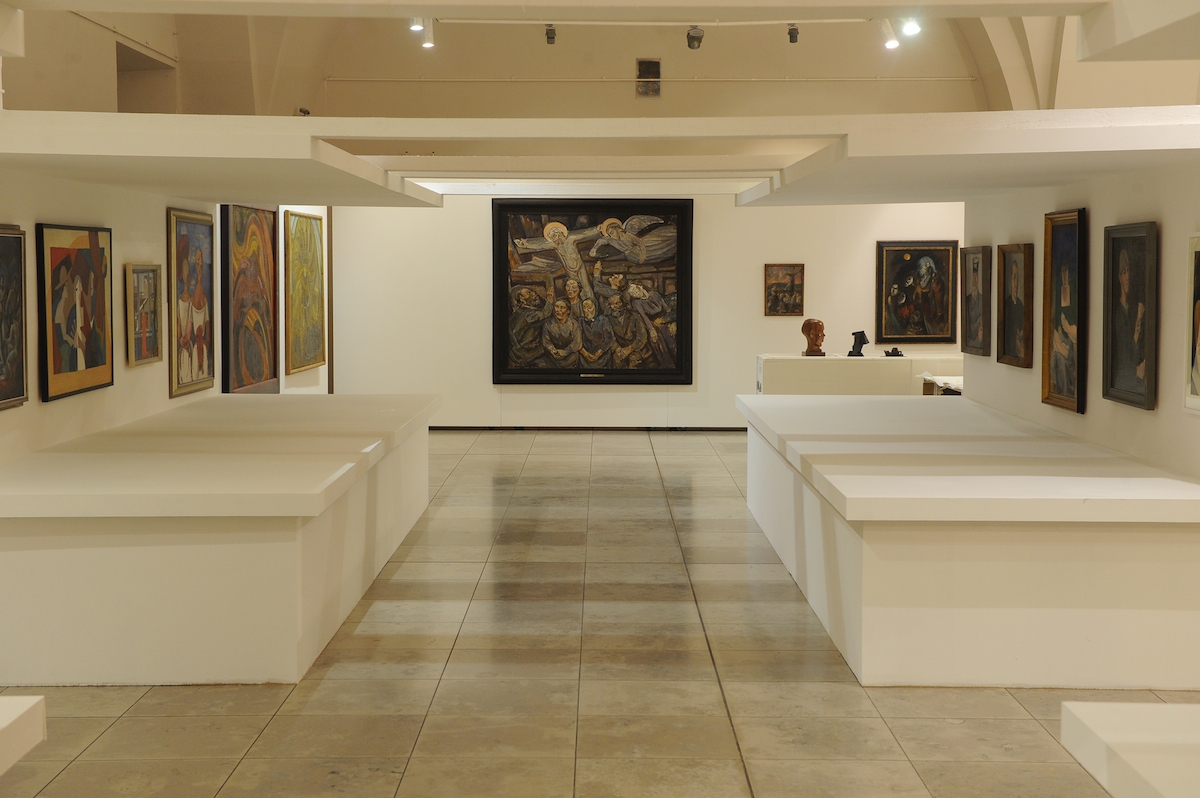An exhibition about the First World War has opened in Riga, Latvia, as part of the city’s programme to mark its status as European Capital of Culture 2014.
The Latvian National Museum of Art will host the exhibition – “1914” – from the 18th January – April 20th 2014 to mark the Centenary of the conflict.
Described as “one of the most central events” in Riga’s programme during its period as European Cultural Capital, the exhibition will be accompanied by academic conferences, lectures and online resources.
 The ‘1914’ exhibition at the Latvian National Museum of Art
The ‘1914’ exhibition at the Latvian National Museum of Art
The exhibition itself takes centre stage, and has been developed with the aim of “correlating visual and artistic evidence about World War I” as a point of reference for Latvians to consider the bearing of the conflict on the historical, cultural and social development of twentieth century Europe.
The exhibition has been organised into three segments:
1. ‘On the Ruins of Empires’: A consideration of the four empires which fell as a result of the First World War – Austria-Hungary, Germany, the Ottoman Empire and the Russian Empire – with a particular focus on the loss and destruction of national and European cultural heritage.
Sourcing material from the Rundale Palace and Museum collection, the exhibition will display aspects of this heritage, including artwork, architecture and other objects and how they themselves were “victims of war”.
This part of the exhibition is described by its organisers as “a demonstration of our attitude to the values of the past” – in many cases, owners of objects relating to the First World War have no idea of the significance of the items.
2. ‘Eyewitnesses’: The countries of Central and Eastern Europe which gained their independence at the end of the First World War will be explored through paintings, sculptures and other works by artists who were ‘eyewitnesses’ to the conflict.
The Latvian National Museum of Art has worked with national museums in Croatia, the Czech Republic, Estonia, Finland, Hungary, Poland, Serbia, Slovakia and Slovenia to source material for this section of the exhibition.
Works on display will include that of Slovenian futurist Antons Jasušs (Anton Jasusch), Lithuanian expressionist Prans Domšaitis (Pranas Domšaitis), Finnish cubism artist Henrijs Eriksons (Henry Ericsson), Polish Suprematism artist Vladislavs Stšeminskis (Wladyslaw Strzeminski), as well as Latvian modernists including Jazeps Grosvalds and Jekabs Kazak amongst many others.
3. ‘Riflemen‘: This section of the exhibition will explore the “disruption to normal life” and the establishment of Latvian Rifle Battalions in 1915. The battalions were part of the Imperial Russian Army and “have become a symbol of Latvian national identity and pride”.
With photographs sourced from the Latvian War Museum and private collections, ‘Riflement’ will reflect the “psychological journey” of combatants, “from the enthusiasm of young soldiers for battle in defence of the Fatherland” at the Battles of Tirelpurvs, Navessala and Riga, to the traumas of the conflict.
This part of the exhibition will also explore the “embracing of left-wing ideas” and will trace the emergence of Latvian Army and the preconditions for the War of Independence.
Reflection
To complement the exhibition, there will be a “modern view of historical events”. Works by three Latvian artists – Eriks Bois, Krišs Salmanis and Andris Bree – will be on display which will reflect on the conflict, accompanied by a discussion.
The exhibition will be on display until the 20th April 2014, with details of lectures, conferences and online resources being released at a later date.
Source: Riga 2014 press release